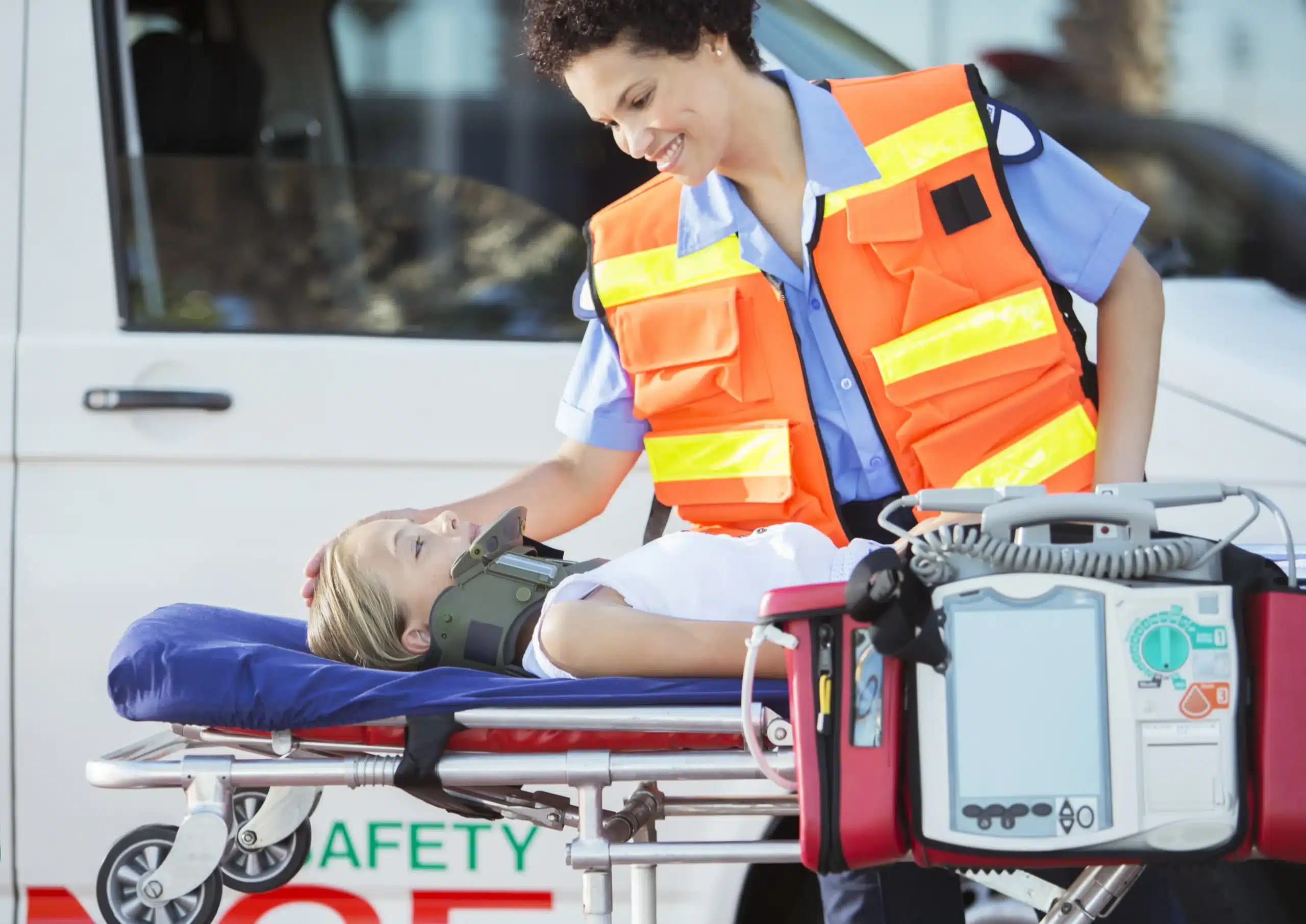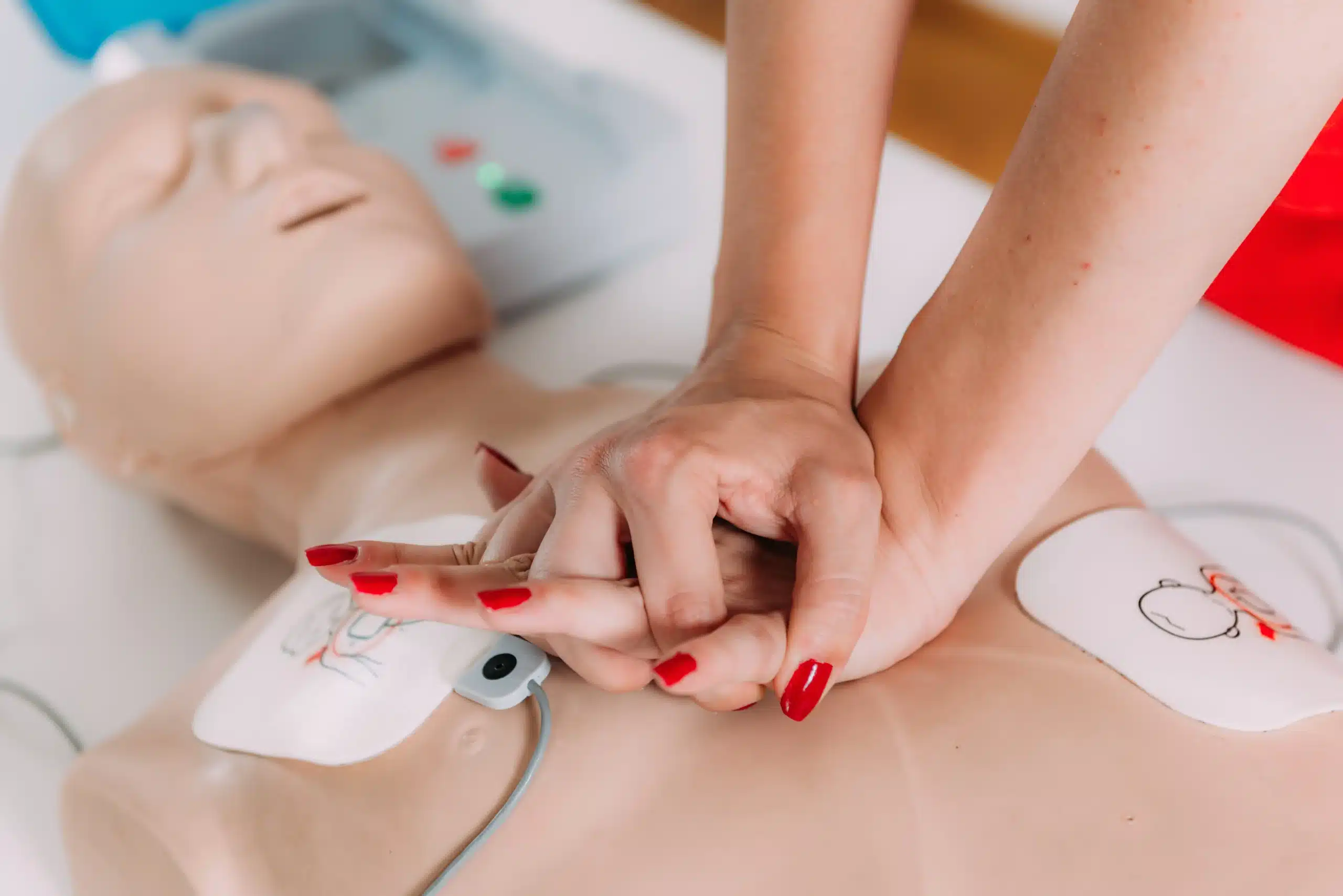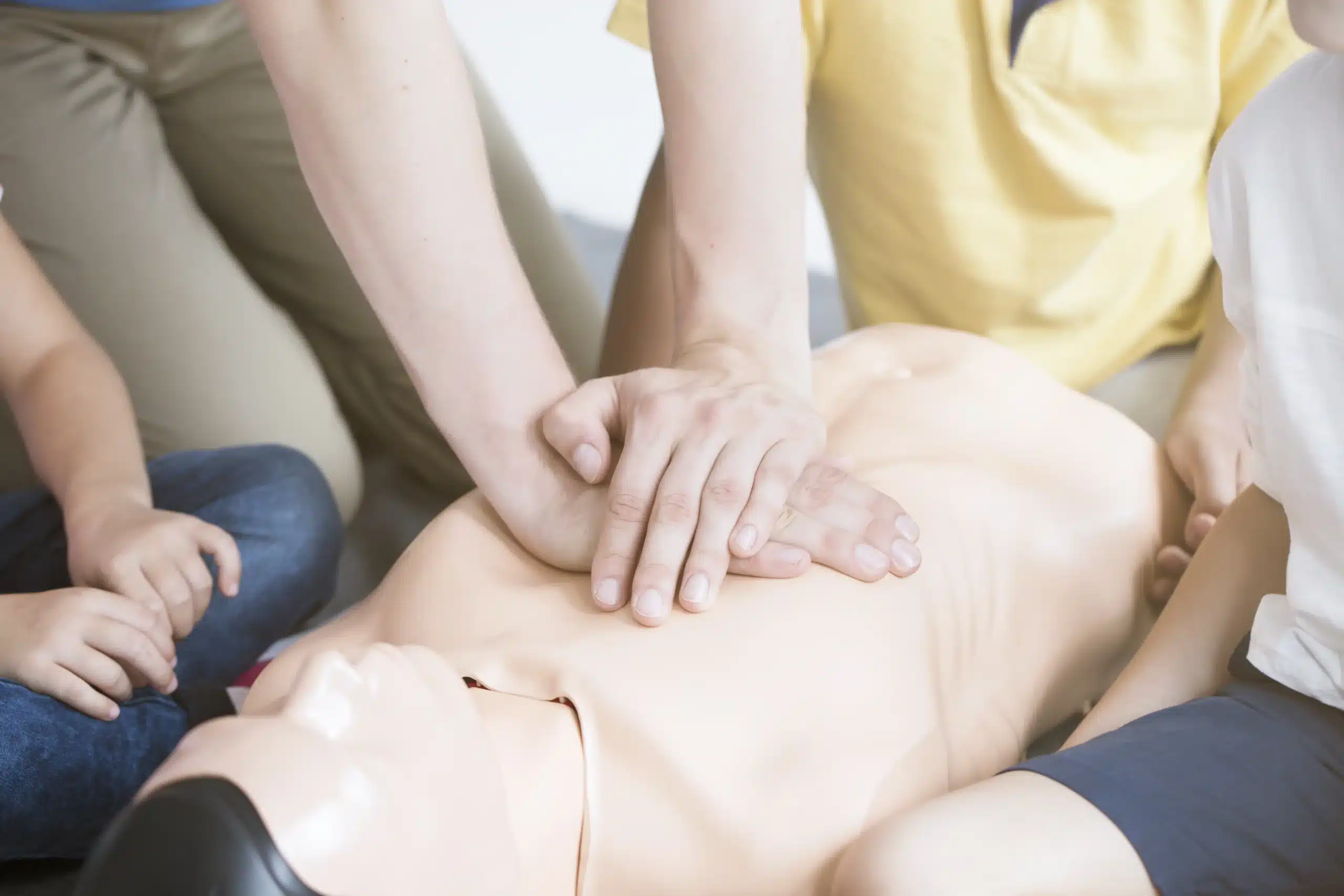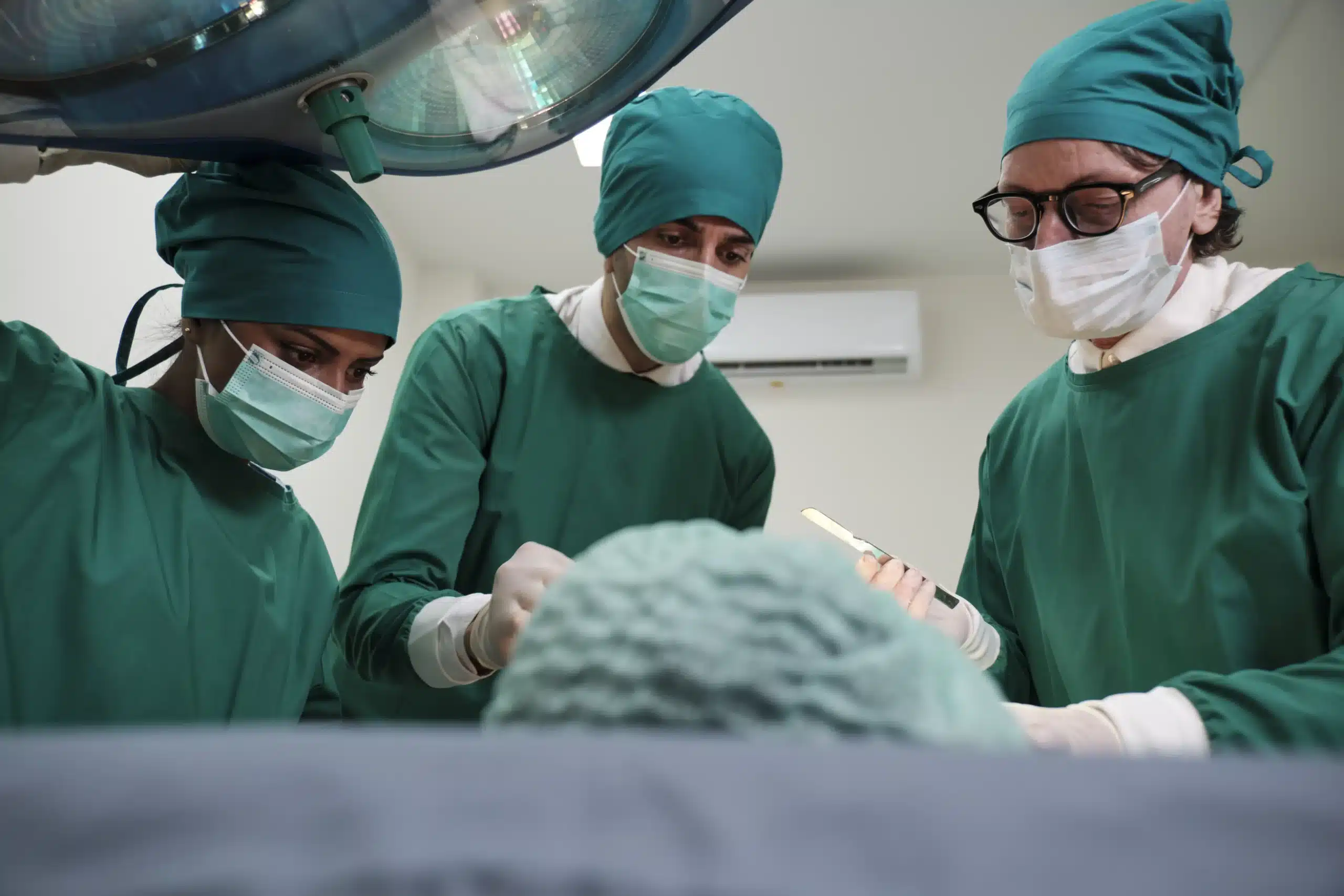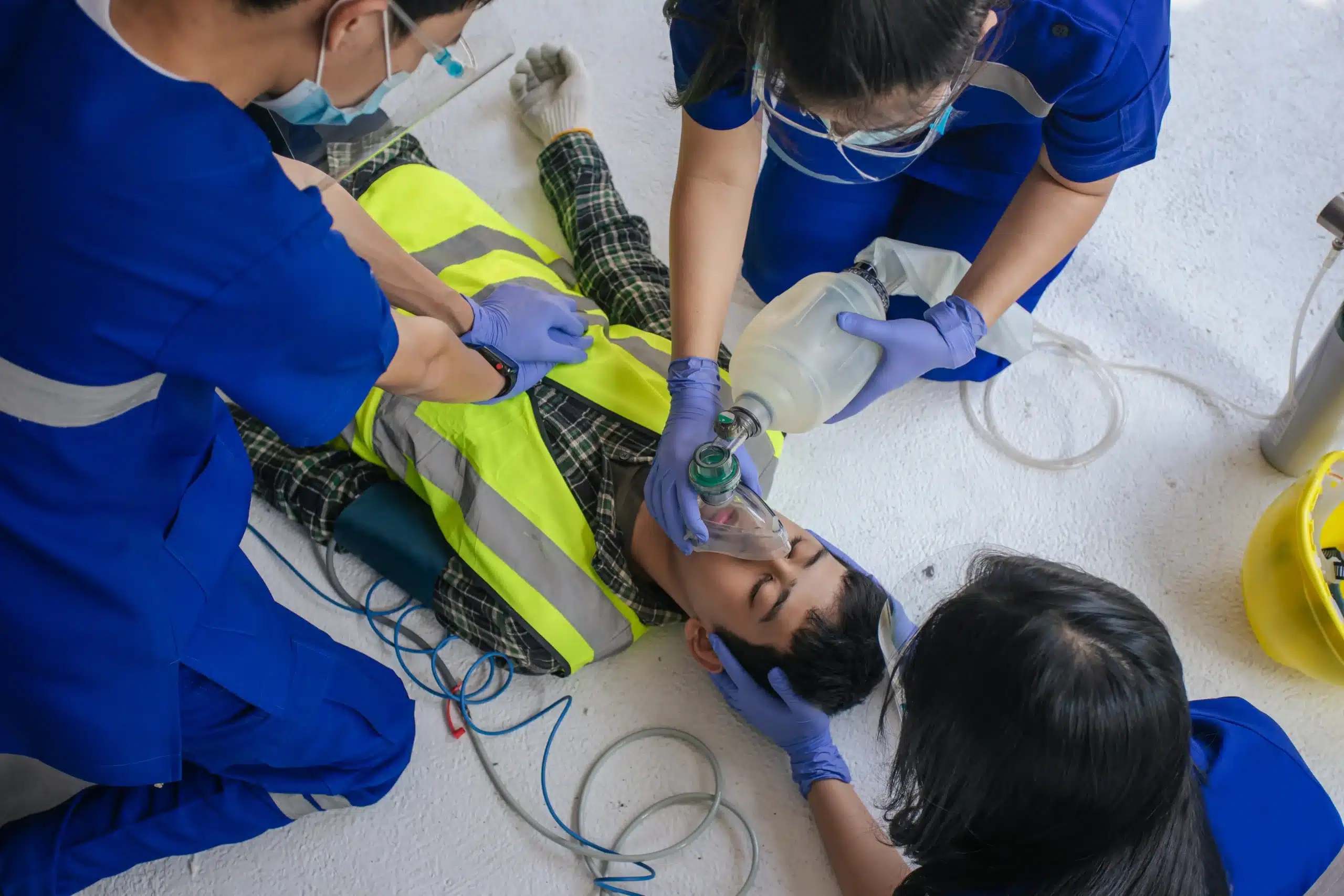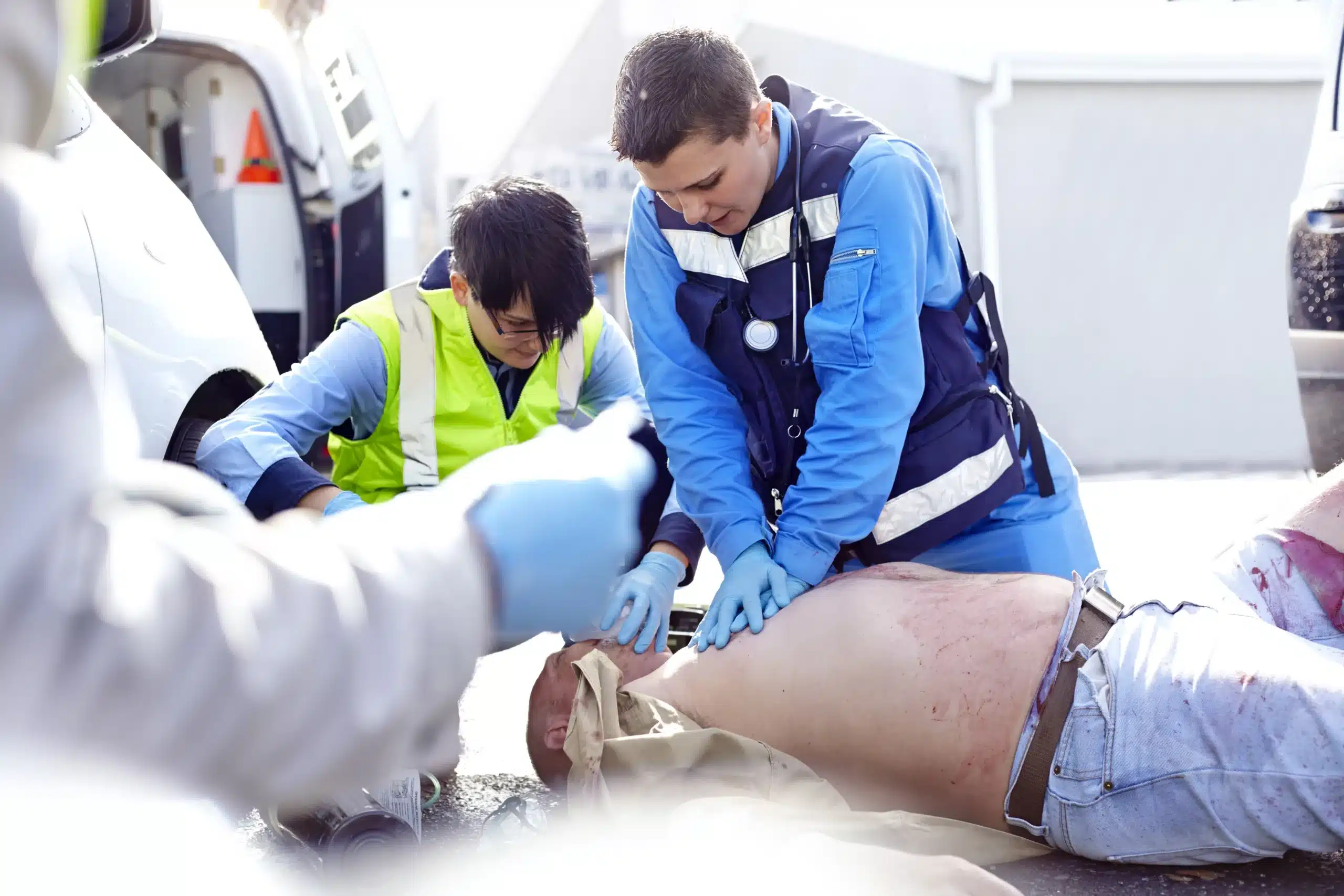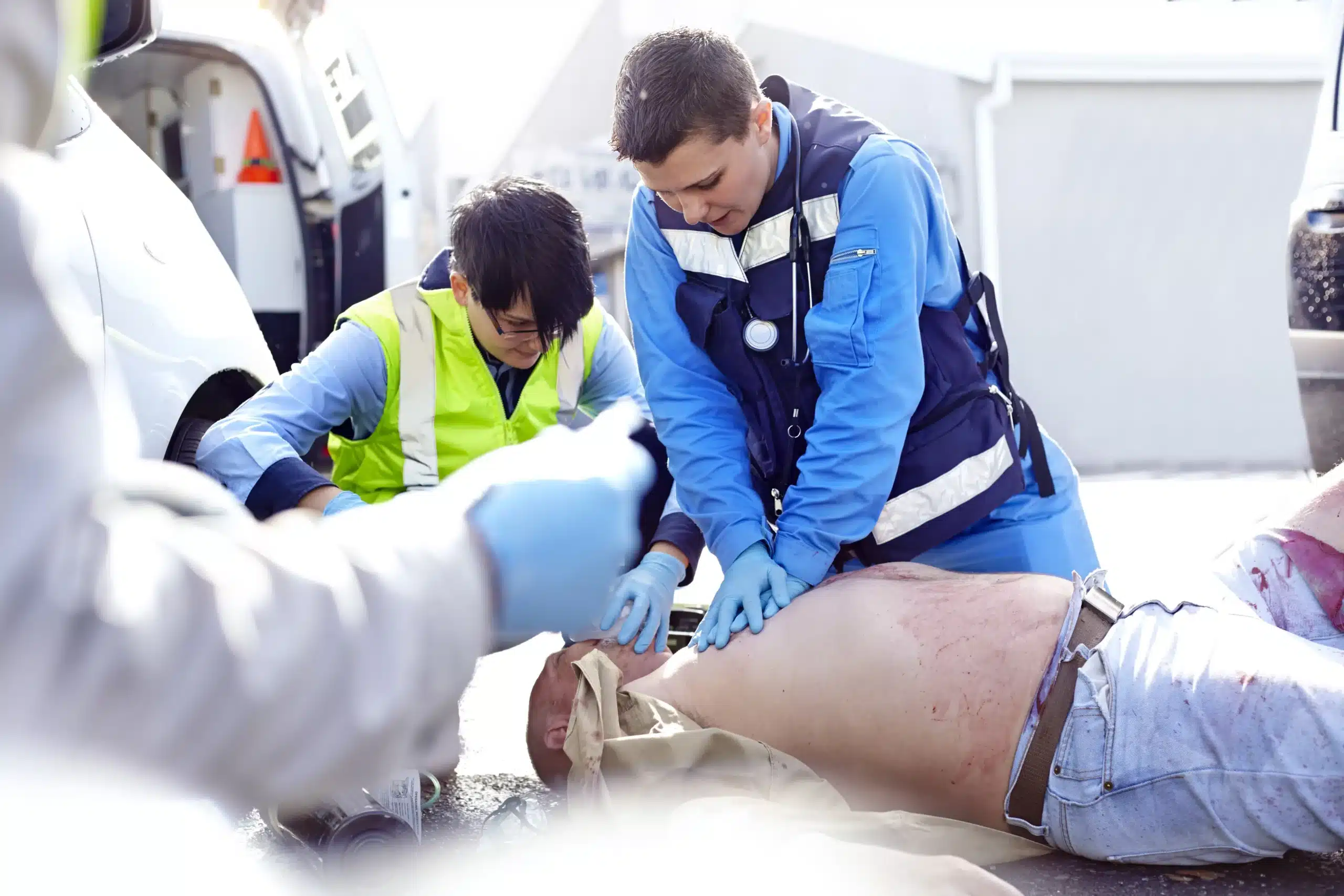Have you ever considered how you’d react in a medical emergency? Knowing Basic Life Support (BLS) can transform you from a bystander into a potential lifesaver. This guide is your roadmap to understanding BLS, finding “BLS classes near me,” and gaining the skills to confidently handle emergencies. We’ll explore what BLS entails, who should get certified, and how to choose the right training program. Whether you’re a healthcare professional, a concerned parent, or simply someone who wants to be prepared, this guide will empower you to act quickly and effectively when it matters most.
Key Takeaways
- BLS skills empower everyone: Whether you’re a healthcare professional or a concerned citizen, learning BLS can give you the confidence to respond effectively in emergencies. Explore different course formats to find one that fits your lifestyle.
- Select the right training provider: Consider factors like location, cost, and the provider’s reputation when choosing a BLS course. Organizations like Hayward CPR Classes, the American Red Cross, and the American Heart Association offer high-quality training.
- Stay current and prepared: Maintain your BLS skills by renewing your certification every two years and practicing regularly. Take advantage of refresher resources to keep your knowledge sharp and your skills up-to-date.
What is BLS?
Basic Life Support (BLS) is a level of medical care used for victims of life-threatening illnesses or injuries until they can receive full medical care at a hospital. It is critical in the moments right after a medical emergency and can be performed by trained bystanders, first responders, paramedics, healthcare providers, and other medical personnel. BLS typically consists of CPR, recognizing and assisting someone who is choking, and providing basic first aid. Early BLS intervention can significantly improve a person’s chances of survival.
What You’ll Learn in BLS
BLS certification courses cover essential lifesaving skills. You’ll learn how to recognize the signs of a cardiac arrest or someone who has stopped breathing, how to perform high-quality CPR for adults, children, and infants, and how to use an automated external defibrillator (AED). Many courses also cover how to relieve choking. BLS classes teach you how to assess the scene, activate the emergency response system, and provide initial care until advanced medical help arrives. These skills empower you to confidently respond to emergencies and potentially save lives.
Who Needs BLS Certification?
BLS certification is essential for healthcare professionals, including doctors, nurses, paramedics, and other medical personnel. It’s also highly recommended for those in fields like healthcare, education, childcare, and public safety. Anyone who might need to respond to a medical emergency, such as lifeguards, coaches, or even concerned family members, can benefit from BLS training. Check with your employer or professional organization to see if BLS certification is a requirement for your job or career path. For those in Hayward, Union City, and San Leandro, Hayward CPR Classes offers convenient and affordable options.
Common BLS Misconceptions
One common misconception is that BLS is only for medical professionals. While it’s crucial for them, anyone can learn and benefit from these lifesaving skills. Another misconception is that online BLS courses are less effective than in-person training. While hands-on practice is essential, many online courses offer interactive simulations and virtual practice scenarios that can effectively prepare you for real-life situations. Finally, some believe that once certified, you’re set for life. BLS guidelines and best practices are regularly updated, so renewing your certification every two years is crucial to stay current and maintain your skills.
Find BLS Classes Near You
Now that you understand what BLS is and why it’s important, let’s explore how to find a BLS class that fits your needs. Knowing where to look and what to consider will make the process much smoother.
Top BLS Training Providers
Several reputable organizations offer BLS certification courses. Here are a few key providers to explore:
Hayward CPR Classes
If you’re in the Hayward, Union City, or San Leandro area, Hayward CPR Classes offers convenient and affordable American Heart Association-certified BLS training. They provide various certifications, including BLS, ACLS, PALS, and CPR, with a focus on equipping you with the skills to handle life-threatening emergencies. Their woman-owned status and commitment to offering competitive prices in Alameda County make them a standout choice. Check out their website for group discounts if you’re training a team.
American Red Cross
The American Red Cross is a well-known provider of BLS certification courses nationwide. Their courses, taught by experts, meet or exceed national standards and cover essential life-saving techniques.
American Heart Association
The American Heart Association offers comprehensive BLS training programs focusing on core skills such as using automated external defibrillators (AEDs), basic airway management, and techniques for assisting someone who is choking.
Local Hospitals and Healthcare Institutions
Many local hospitals and healthcare institutions offer BLS certification courses to their staff and the wider community. Check with hospitals in your area or search online for “BLS classes near me” to find local options.
Choosing a BLS Provider
With numerous BLS training providers available, choosing one that meets your specific needs is essential. Consider factors like location, cost, schedule flexibility, and the provider’s reputation. Look for providers who offer high-quality instruction, hands-on practice, and a supportive learning environment. Reading reviews and comparing course offerings can help you make an informed decision. A good training provider will ensure you feel confident and prepared to respond to emergencies.
Find Classes Online
If in-person classes don’t fit your schedule or location, online BLS certification is a convenient and often cost-effective alternative. Online courses allow you to learn at your own pace and complete the coursework from anywhere with an internet connection. Just be sure to choose a reputable online provider that meets the same quality standards as in-person courses. Many online programs still incorporate hands-on skills practice through in-person skills sessions, ensuring you gain practical experience alongside theoretical knowledge.
BLS Class Formats: What to Expect
Choosing the right BLS class format is the first step. Let’s break down the different options so you can find what works best for you.
In-Person, Online, and Blended Learning
BLS classes come in a few different formats. Traditional in-person classes offer hands-on learning and direct interaction with an instructor. If your schedule is more flexible, online courses let you learn at your own pace. Blended learning programs, like those offered by the American Red Cross, combine online coursework with in-person skills sessions, giving you the best of both worlds.
Course Duration and Structure
Most BLS classes run between 2.5 and 4.5 hours. In-person sessions can often be completed in a single afternoon. While some group sessions might take a bit longer to accommodate local protocols, the curriculum is designed to be efficient and comprehensive.
Core Topics and Skills
BLS courses cover the core skills you’ll need in an emergency. You’ll learn CPR, how to use an AED, and basic first aid. Beyond these hands-on skills, the training also emphasizes critical thinking, problem-solving, communication, and teamwork. Understanding the legal aspects of providing aid is also an important part of the curriculum.
Hands-On Practice and Skills Assessment
Hands-on practice is key to mastering BLS skills. Organizations like the American Heart Association often require both an online component and an in-person skills check. This practical assessment isn’t just about checking boxes; it’s about building your confidence and ensuring you can effectively use your skills under pressure. For refreshing these skills, consider exploring RQI classes.
BLS Class Costs, Registration, and Preparation
So, you’re ready to get your BLS certification—great! This section covers costs, how to register for a class, and a few tips to help you prepare.
Average Costs and Group Discounts
Most BLS courses cost around $90 for initial certification and $60 per person for renewal. Many training centers, including Hayward CPR Classes, offer special group rates for BLS certification, making training your team more affordable. Check with your chosen provider for the most up-to-date pricing.
Register for a BLS Class
Finding a BLS class is easier than you might think. Hospitals and clinics often offer BLS certification courses for staff and the community. You can also find classes through established providers like the American Red Cross and the American Heart Association. Of course, you can always visit the Hayward CPR Classes website to view our schedule and register directly. We offer daily classes in over 60 cities!
What to Bring
While your BLS provider will give you a list of required materials, bring a notebook and pen to take notes. Comfortable clothing is also recommended, as you’ll be practicing hands-on skills. Make sure your chosen BLS course is OSHA, ILCOR, and ECC compliant and nationally or internationally accepted.
Tips for First-Timers
A little nervous about your first BLS class? Don’t be! The instructors are there to guide you, and the skills are straightforward. Focus on understanding the core concepts and ask questions. No question is a silly question when it comes to saving a life. It’s natural to feel a little apprehensive, but remember that BLS certification equips you with invaluable skills. You’ve got this!
BLS Certification: Process and Renewal
Once you’ve completed your BLS course, you’ll want to understand the certification process, how to maintain your credentials, and how to keep your skills fresh. Here’s what you need to know:
Certification Exam and Skills Assessment
The American Heart Association (AHA) BLS certification process involves both a cognitive exam and a hands-on skills assessment. You’ll need to successfully complete both to earn your BLS provider card. The skills assessment requires an in-person evaluation, so there isn’t a fully online option for AHA BLS certification. For more information, visit the American Heart Association website for details.
Renewing Your Certification
BLS certification is typically valid for two years. To maintain your credentials, take a renewal course before your current certification expires. Renewal courses often cover updates to guidelines and best practices, so staying current is essential. Like initial certification, renewal involves both a written exam and skills testing. BLS renewal courses are available online and in person, offering flexibility.
Continuing Education
Many organizations offer resources to help you maintain your BLS skills. Look for providers offering refresher materials like quizzes, games, and videos. These tools can reinforce your knowledge and help you stay prepared. Even short, regular reviews can make a big difference. The Red Cross, for example, provides these helpful resources.
Practice and Refresh Your Skills
Beyond formal continuing education, regular practice is key to maintaining BLS skills. Set aside time each month to review key procedures like CPR and using an AED. Practicing with friends, family, or colleagues can create a comfortable learning environment. Look for opportunities to apply your skills in low-stakes settings, such as volunteering. The more you practice, the more confident and effective you’ll be. The Red Cross often emphasizes practical, scenario-based learning in their training to build these skills.
Related Articles
- BLS for Healthcare Providers in Union City: A Guide – Hayward CPR Classes
- BLS Certification in Hayward: Everything You Need to Know – Hayward CPR Classes
- Find Basic Life Support (BLS) Training in Union City – Hayward CPR Classes
- BLS Training Near Me: Your Complete Guide – Hayward CPR Classes
- BLS Renewal in Hayward: Your Easy Guide – Hayward CPR Classes
Frequently Asked Questions
What’s the difference between BLS and CPR?
CPR, or Cardiopulmonary Resuscitation, is a specific technique used within BLS. Think of BLS as the broader approach to life support, encompassing CPR, recognizing someone who is choking, using an AED, and basic first aid. So, while CPR is a vital component, BLS covers a wider range of lifesaving skills.
How often do I need to renew my BLS certification?
BLS certification is typically valid for two years. It’s important to renew before it expires to maintain your credentials and stay up-to-date on the latest guidelines and best practices.
What if I don’t work in healthcare? Do I still need BLS?
Absolutely! While BLS is essential for healthcare professionals, anyone can benefit from learning these lifesaving skills. From teachers and coaches to parents and caregivers, knowing BLS can empower you to respond effectively in emergencies.
Are online BLS courses as good as in-person classes?
Online BLS courses offer a convenient way to learn the material at your own pace. However, hands-on practice is crucial for mastering BLS skills. Look for online courses that include in-person skills sessions or supplement your online training with hands-on practice.
How can I find a BLS class near me?
Several resources can help you find a BLS class. Check with local hospitals, community centers, or established providers like the American Red Cross and the American Heart Association. You can also search online for “BLS classes near me” or visit the Hayward CPR Classes website for courses in the Hayward, Union City, and San Leandro areas.
